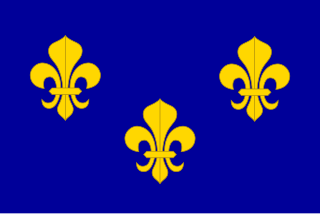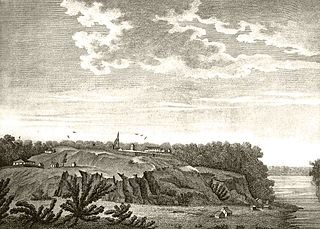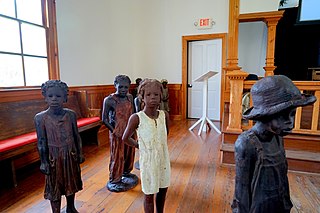Related Research Articles

The Choctaw are a Native American people originally based in the Southeastern Woodlands, in what is now Mississippi and Alabama. The Choctaw language is a Western Muskogean language. Today, Choctaw people are enrolled in four federally recognized tribes: the Choctaw Nation of Oklahoma, Mississippi Band of Choctaw Indians, Jena Band of Choctaw Indians in Louisiana, and the Yowani Choctaws enrolled under the confederacy of the Caddo Nation. Choctaw descendants are also members of state-recognized tribes.

John Reed Swanton was an American anthropologist, folklorist, and linguist who worked with Native American peoples throughout the United States. Swanton achieved recognition in the fields of ethnology and ethnohistory. He is particularly noted for his work with indigenous peoples of the Southeast and Pacific Northwest.

The Natchez are a Native American people who originally lived in the Natchez Bluffs area in the Lower Mississippi Valley, near the present-day city of Natchez, Mississippi, in the United States. They speak a language with no known close relatives, although it may be very distantly related to the Muskogean languages of the Creek Confederacy. An early American geographer noted in his 1797 gazetteer that they were also known as the "Sun Set Indians".

Louisiana or French Louisiana was an administrative district of New France. In 1682 the French explorer René-Robert Cavelier, Sieur de la Salle erected a cross near the mouth of the Mississippi River and claimed the whole of the drainage basin of the Mississippi River in the name of King Louis XIV, naming it "Louisiana". This land area stretched from the Great Lakes to the Gulf of Mexico and from the Appalachian Mountains to the Rocky Mountains. The area was under French control from 1682 to 1762 and in part from 1801 (nominally) to 1803.
The Houma are a historic Native American people of Louisiana on the east side of the Red River of the South. The United Houma Nation Inc., who identify as descendants of the Houma people, have been recognized by the state as a tribe since 1972, but are not recognized by the federal government.
The Avoyel or Avoyelles were a small Native American tribe who at the time of European contact inhabited land near the mouth of the Red River at its confluence with the Atchafalaya River near present-day Marksville, Louisiana. Today, the Avoyel are a member of the federally recognized Native American tribe and sovereign nation of the Tunica Biloxi Tribe of Louisiana.
The Yazoo were a tribe of the Native American Tunica people historically located along the lower course of the Yazoo River in an area now known as the Mississippi Delta. They were closely related to other Tunica language–speaking peoples, especially the Tunica, Koroa, and possibly the Tioux.
The Taensa were a Native American people whose settlements at the time of European contact in the late 17th century were located in present-day Tensas Parish, Louisiana. The meaning of the name, which has the further spelling variants of Taenso, Tinsas, Tenza or Tinza, Tahensa or Takensa, and Tenisaw, is unknown. It is believed to be an autonym. The Taensa should not be confused with the Avoyel, known by the French as the petits Taensas, who were mentioned in writings by explorer Pierre Le Moyne d'Iberville in 1699. The Taensa are more closely related to the Natchez people and both are considered descendants of the late prehistoric Plaquemine culture.

Étienne Perier or Étienne de Perier (1686–1766), also known as Perier the Elder, was a French naval officer and governor of French Louisiana from 1726 to 1733. His time as governor included some notable achievements, including the construction of the first levee along the Mississippi River in 1727. In response to the Natchez Revolt, he attempted to completely destroy the Natchez people, which increased Native American hostility toward the French in the territory. Because he failed to secure the safety of the colony, Perier was recalled as governor in March 1733. He later distinguished himself as a naval officer and privateer, including during the capture of HMS Northumberland in 1744.
The Quinipissa were an Indigenous people of the Southeastern Woodlands who were living on the lower Mississippi River, in present-day Louisiana, as reported by René-Robert Cavelier, Sieur de La Salle in 1682.
The Acolapissa were a small tribe of Native Americans of North America, who lived in the Southeast of what is the present-day United States. They lived along the banks of the Pearl River, between present-day Louisiana and Mississippi. They are believed to have spoken a Muskogean language, closely related to the Choctaw and Chickasaw spoken by other Southeast tribes of the Muskogean family.
The Koroa were one of the groups of Indigenous people of the Southeastern Woodlands who lived in the Mississippi Valley before French colonization. The Koroa lived in the Yazoo River basin in present-day northwest Mississippi.
The Chakchiuma were a Native American tribe of the upper Yazoo River region of what is today the state of Mississippi.
The Okelousa were Native American people Louisiana, United States. They lived west and north of Pointe Coupee Parish, Louisiana.

The Opelousa were an Indigenous people of the Southeastern Woodlands in Louisiana. They lived near present-day Opelousas, Louisiana, west of the lower Mississippi River, in the 18th century. At various times, they allied with the neighboring Atakapa and Chitimacha peoples.

Slavery among Native Americans in the United States includes slavery by and enslavement of Native Americans roughly within what is currently the United States of America.

The Tunica people are a group of linguistically and culturally related Native American tribes in the Mississippi River Valley, which include the Tunica ; the Yazoo; the Koroa ; and possibly the Tioux. They first encountered Europeans in 1541 – members of the Hernando de Soto expedition.

The Natchez revolt, or the Natchez massacre, was an attack by the Natchez Native American people on French colonists near present-day Natchez, Mississippi, on November 28, 1729. The Natchez and French had lived alongside each other in the Louisiana colony for more than a decade prior to the incident, mostly conducting peaceful trade and occasionally intermarrying. After a period of deteriorating relations and warring, Natchez leaders were provoked to revolt when the French colonial commandant, Sieur de Chépart, demanded land from a Natchez village for his own plantation near Fort Rosalie. The Natchez plotted their attack over several days and managed to conceal their plans from most of the French; colonists who overheard and warned Chépart of an attack were considered untruthful and were punished. In a coordinated attack on the fort and the homesteads, the Natchez killed almost all of the Frenchmen, while sparing most of the women and enslaved Africans. Approximately 230 colonists were killed overall, and the fort and homes were burned to the ground.
The Bayogoula were a Native American tribe from Louisiana in the southern United States.

Following Robert Cavelier de La Salle establishing the French claim to the territory and the introduction of the name Louisiana, the first settlements in the southernmost portion of Louisiana were developed at present-day Biloxi (1699), Mobile (1702), Natchitoches (1714), and New Orleans (1718). Slavery was then established by European colonists.
References
- ↑ Swanton, John Reed (1911). Indian Tribes of the Lower Mississippi Valley and Adjacent Coast of the Gulf of Mexico. Washington, DC: U.S. Government Printing Office. p. 30.
- ↑ Hunter, Donald G.; Pearson, Charles E.; Reeves, Sally K. (1988). An Archaeological Survey of Golden Ranch Plantation, Lafourche Parish, Louisiana (Report). Baton Rouge, Louisiana: Coastal Environments Inc. p. 31.
- ↑ Balvay, Arnaud (2013). "The French and the Natchez: A Failed Encounter". In Englebert, Robert; Teasdale, Guillaume (eds.). French and Indians in the Heart of North America, 1630-1815. East Lansing, Michigan: University of Michigan Press. pp. 138–58. ISBN 978-1-60917-360-9.
- 1 2 3 Din, Gilbert C. (1999). Spaniards, Planters, and Slaves: The Spanish Regulation of Slavery in Louisiana, 1763–1803. College Station, Texas: Texas A & M University Press. pp. 15–16. ISBN 0-585-37685-9. OCLC 48139077 . Retrieved 2022-07-06.
- ↑ Ingersoll, Thomas N. (April 1991). "Free Blacks in a Slave Society: New Orleans, 1718–1812". The William and Mary Quarterly. 48 (2): 177. doi:10.2307/2938067. JSTOR 2938067.
- ↑ Ellis, Elizabeth N. (2022). The Great Power of Small Nations . Philadelphia, Pennsylvania: University of Pennsylvania Press. p. 155. doi:10.9783/9781512823189. ISBN 9781512823189.
- ↑ Swanton, John Reed (1911). Indian Tribes of the Lower Mississippi Valley and Adjacent Coast of the Gulf of Mexico. Washington, D.C.: U.S. Government Printing Office. p. 301.